Yesterday I posted the results of a fairly simple decentering test that requires only an ISO 12233 target, some lighting, a tripod, and a few minutes.
Today I’ll show you what happens when you use a slanted edge sharpness analyzer — in this case, Imatest — on the images you saw yesterday.
Here’s a crop of the part of the target we need for the testing:
We’ll use those black bars for the slanted edges.
Here’s what Imatest does with the horizontal (ish) edge when it’s centered:
And Here’s the vertical edge results for the centered image:
Here are the tabulated results for the center and all four corners:
The two beige rows are the centers; the others are the corners.
Imatest labels the horizontal edges as vertical, since the MTFxx is calculated in a vertical direction. The reverse is true for the other edge orientation.
There’s not much pattern here. The center isn’t always the sharpest; which is probably the result of slight misfocusing. The corner that’s the sharpest in Imatest’s vertical orientation is the weakest in the horizontal one. The reverse is true, too.
If we average the numbers some semblance of sense seems to arise:
Now you can see that they’re all about the same, which is what it looked like by eye.
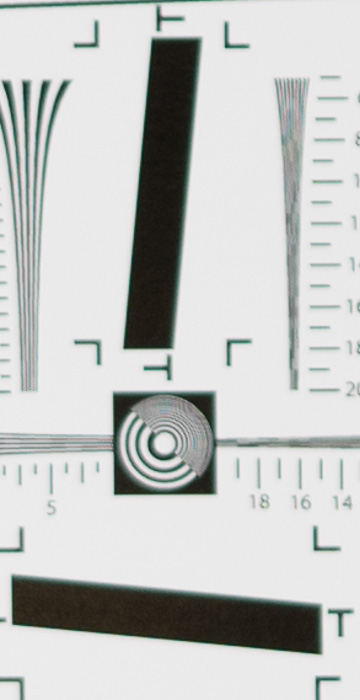
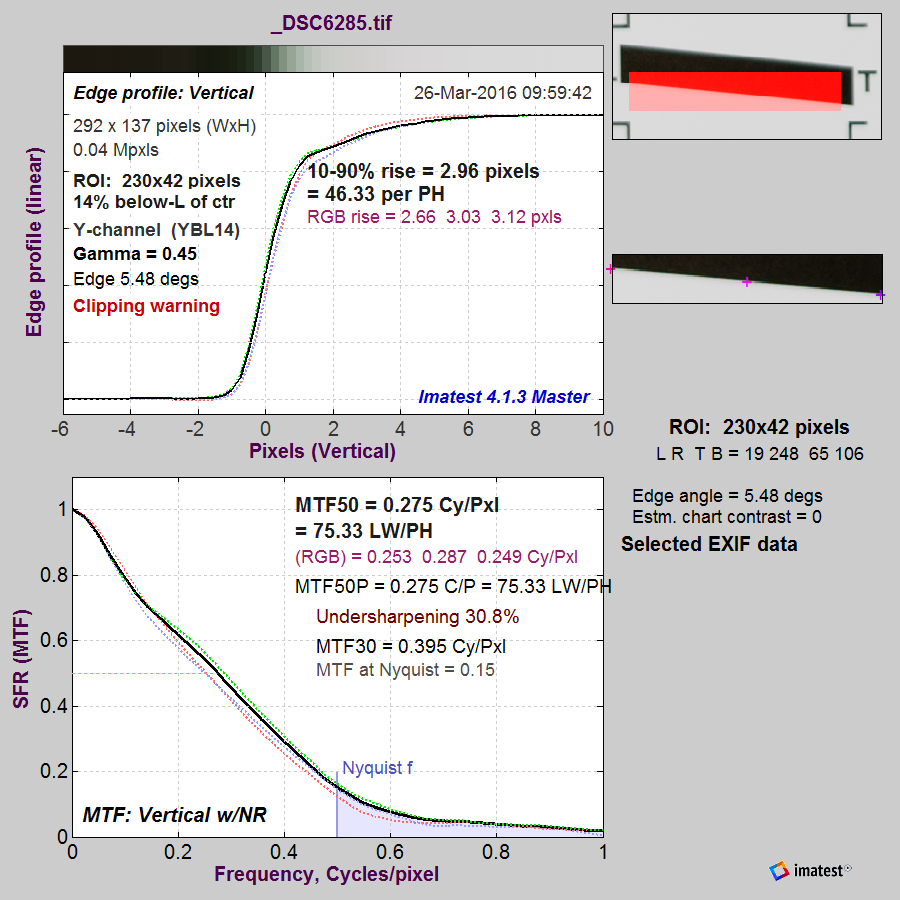
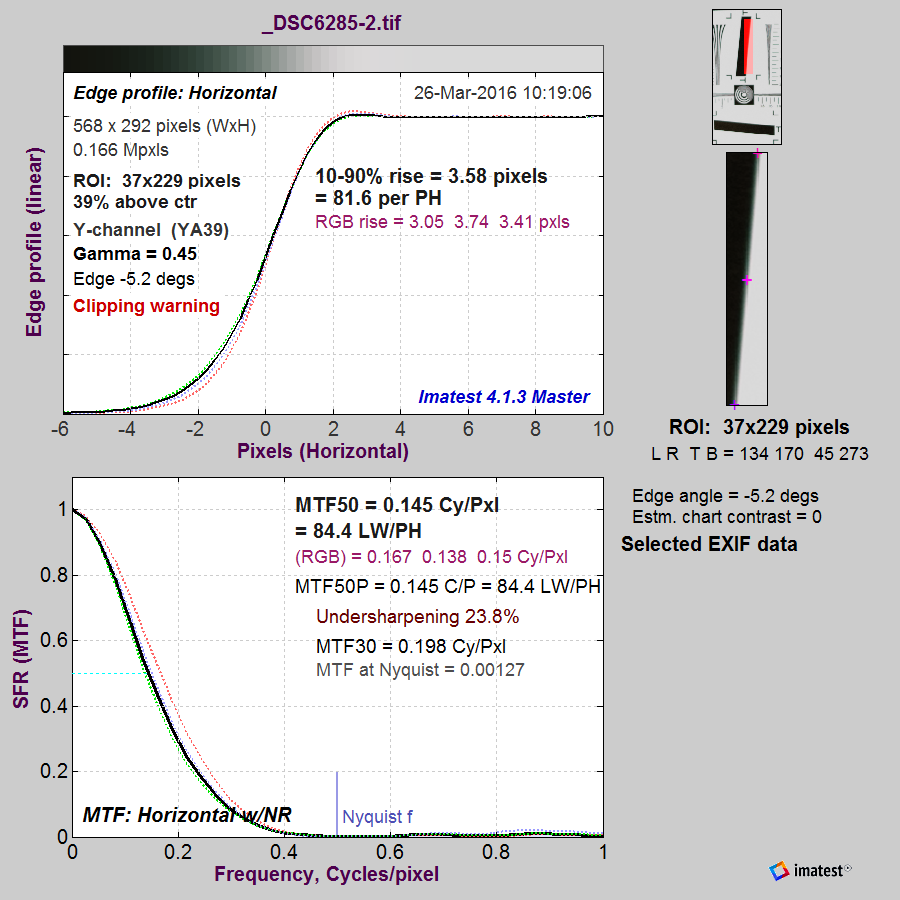
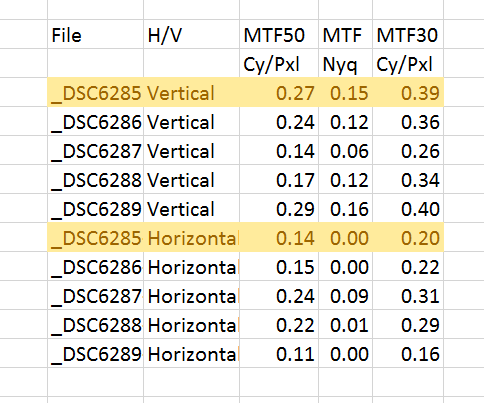
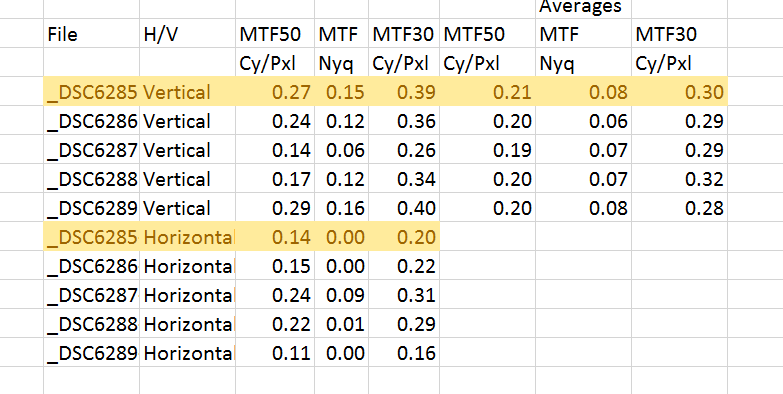
Jim says
A reader sent me the following in an email: “On your latest ‘decentering’ testing I noticed that Imatest was giving the ‘clipping warning’. This may have an effect on your results – possibly masking decentering effects. ”
I’m glad you pointed that out. When most lenses are tested wide open, there is significant edge falloff. That is certainly the case with both the Sony 90/2.8 and the Sony 70-200/4. When doing slanted edge testing near the corners, it is my practice to make sure that there is adequate exposure there, which sometimes results in Imatest’s giving a clipping warning for the center crops, although I am careful to make sure that no actual clipping occurs. It is possible that the center crop MTF reading are slightly higher than Imatest is reporting because the image has values within a stop of full scale. However, the center readings are not used in determining decentering, just the corner ones.
Jim
Jerry says
There were many discussions on MTF difference in the vertical and horizontal direction caused by asymmetric AA filters, but what about big differences we can often see in the same direction? The crop above is a perfect example of this phenomenon. The right and top edges are blurry, while left and bottom ones are sharp. The MTF values for the two edges in the same direction and in the same part of the image are totally different (just as the MTF at Nyquist). How can you explain it and which MTF value is correct?